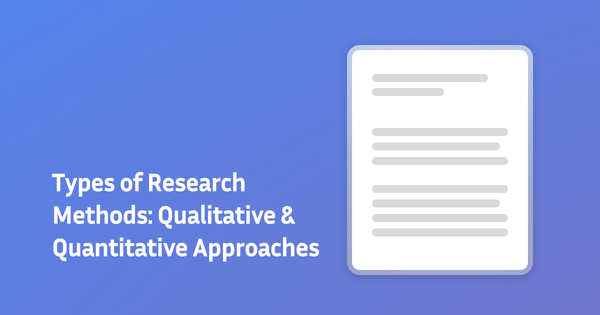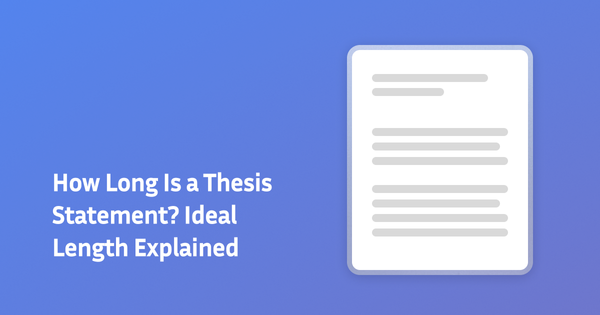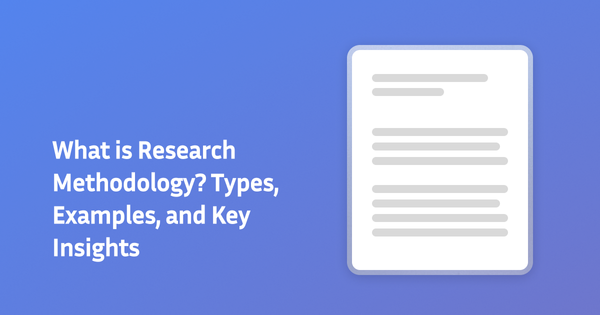Types of Research Papers: A Complete Guide to All Major Formats

I still remember the panic I felt when my professor assigned a "comparative analysis research paper" and I had absolutely no idea what that meant. Was it different from the argumentative paper I'd written last semester? Did it need a literature review? The whole thing gave me a headache!
If you've ever found yourself in a similar situation, staring blankly at a research paper assignment and wondering what exactly your professor wants, you're definitely not alone. The world of academic writing has so many different formats and types that it can make your head spin, especially when you're just starting out.
In this guide, I'll walk you through the major types of research papers you're likely to encounter in your academic journey. I've been through the confusion myself, so I'll break everything down in plain English – the way I wish someone had explained it to me back then.
Why Different Types of Research Papers Exist
Before diving into specific formats, it helps to understand why we have different types of research papers in the first place. It's actually pretty simple: different research goals require different approaches.
Think about it like tools in a toolbox. You wouldn't use a hammer to tighten a screw, right? Similarly, you wouldn't use an argumentative research structure when your goal is to objectively analyze data from an experiment.
Each type of research paper has evolved to serve a specific purpose in the academic community. Some help researchers make arguments, others help them explain connections between events, and yet others help them report on experiments.[1] The structure matches the purpose.
The Major Types of Research Papers
Let's explore the most common types of research papers you'll encounter, with real examples and key features of each.

1. Analytical Research Papers
An analytical paper takes a question or topic, breaks it down into components, evaluates the evidence, and presents a perspective based on this analysis. [2]
Purpose: To examine a topic by breaking it down into components, evaluating the evidence, and presenting a perspective based on this analysis.
Structure:
- Introduction with a clear thesis that presents your analytical approach
- Background section providing context
- Body paragraphs organized by aspects of analysis (not arguments)
- Objective examination of evidence for each component
- Conclusion synthesizing your analysis without personal opinions
How to Approach It:
- Choose a complex topic that can be broken down into parts
- Research thoroughly from multiple perspectives
- Create an analysis framework (aspects, factors, components)
- Examine each aspect objectively, looking at evidence
- Maintain a neutral tone throughout—you're analyzing, not arguing
- Draw conclusions based on where the evidence points
Example: Analyzing the impacts of remote learning on different student populations during the pandemic, examining factors like technology access, home environment, and learning styles.
2. Argumentative (Persuasive) Research Papers
This type aims to convince readers of a particular viewpoint using evidence and reasoning.[3] You take a clear position and defend it.
Purpose: To convince readers of a particular viewpoint using logical reasoning and evidence.
Structure:
- Introduction with a clear, debatable thesis statement
- Background section explaining the controversy
- Body paragraphs presenting arguments supporting your position
- Counterargument section acknowledging opposing views
- Rebuttal section addressing those counterarguments
- Conclusion reinforcing your position
How to Approach It:
- Choose a genuinely debatable topic (people disagree on it)
- Take a clear position that can be defended with evidence
- Research both supporting evidence and counterarguments
- Organize your strongest points logically
- Address opposing viewpoints fairly
- Use persuasive but academic language
- Provide specific solutions or implications
Example: Arguing that standardized testing should be eliminated from college admissions decisions because it perpetuates inequality and fails to predict student success.
3. Experimental Research Papers
These papers report on experiments you've conducted, following the scientific method.[4] They're common in natural sciences, psychology, and medicine.
Purpose: To report on original experiments conducted following the scientific method.
Structure:
- Introduction (problem and hypothesis)
- Methods (detailed procedure)
- Results (findings without interpretation)
- Discussion (interpretation and implications)
- Conclusion and recommendations for future research
How to Approach It:
- Identify a specific research question that can be tested
- Develop a clear hypothesis
- Design an experiment with controls and variables
- Document your methodology precisely enough for replication
- Collect data systematically
- Analyze results using appropriate statistical methods
- Discuss what the results mean in the context of your field
- Acknowledge limitations honestly
Example: Testing whether a specific meditation technique reduces stress hormones in college students during exam periods.
4. Literature Review Papers
A literature review summarizes and synthesizes existing research on a topic, identifying patterns, gaps, or contradictions in the literature.[5]
Purpose: To summarize, evaluate and synthesize existing research on a topic, identifying patterns, gaps, or contradictions.
Structure:
- Introduction stating the focus and importance of the review
- Methodology section explaining how sources were selected
- Body organized thematically, methodologically, or chronologically
- Analysis of strengths, weaknesses, and contradictions in the literature
- Conclusion identifying research gaps and future directions
How to Approach It:
- Define clear boundaries for what literature to include/exclude
- Search systematically using databases relevant to your field
- Create a system to track key findings from each source
- Look for patterns, contradictions, and gaps across studies
- Organize sources in a meaningful way (not just summarizing each)
- Synthesize findings to show the current state of knowledge
- Highlight where more research is needed
Example: Reviewing the last decade of research on how social media affects adolescent mental health, identifying methodological issues and contradictory findings.
5. Case Study Research Papers
These papers deeply examine a specific instance, event, individual, or small group to draw broader conclusions.[6]
Purpose: To examine a specific instance, event, individual, or organization in depth to illustrate broader principles or generate insights.
Structure:
- Introduction to the case and why it's significant
- Background and context section
- Description of the case in rich detail
- Analysis connecting the case to broader principles or theories
- Discussion of implications and lessons learned
- Conclusion addressing transferability vs. uniqueness
How to Approach It:
- Select a case that is either typical or unusual in illuminating ways
- Gather data from multiple sources (interviews, documents, observations)
- Provide thick, detailed description of the case
- Connect specific details to broader concepts or theories
- Consider what makes this case special or representative
- Discuss what others can learn from this specific instance
- Acknowledge limitations of generalizability
Example: Examining how a local business successfully adapted to supply chain disruptions during the pandemic, using this specific case to illustrate resilience principles.
6. Survey Research Papers
These papers collect and analyze data gathered through surveys to understand populations, opinions, or trends.[7]
Purpose: To collect and analyze data from a population to understand attitudes, behaviors, or characteristics.
Structure:
- Introduction explaining research questions and significance
- Literature review establishing context for survey
- Methodology section detailing survey design and distribution
- Results section with statistical analysis and data visualization
- Discussion interpreting findings
- Conclusion with implications and limitations
How to Approach It:
- Define clear, measurable research questions
- Design survey questions that directly address your research questions
- Select an appropriate sampling method
- Pilot test your survey to identify problems
- Administer the survey consistently
- Analyze results using appropriate statistical methods
- Present findings using clear visualizations
- Discuss limitations of your sample and methodology
Example: Surveying first-generation college students about their experiences with academic support services to identify barriers to access.
7. Comparative Research Papers
These papers examine similarities and differences between two or more subjects, theories, texts, or phenomena.[8]
Purpose: To examine similarities and differences between two or more subjects, texts, theories, or events to generate meaningful insights.
Structure:
- Introduction explaining what's being compared and why
- Background on both subjects being compared
- Body organized either:
- By subject (discussing subject A fully, then subject B)
- By points of comparison (discussing each point across both subjects)
- Analysis of significant similarities and differences
- Conclusion with insights gained from the comparison
How to Approach It:
- Choose subjects that have meaningful connections
- Develop a framework with specific points of comparison
- Research both subjects thoroughly
- Decide whether to organize by subject or by points of comparison
- Balance discussion of both similarities and differences
- Move beyond description to analysis of why differences matter
- Draw conclusions about what the comparison reveals
Example: Comparing health care systems in two different countries to identify strengths and weaknesses of each approach.
8. Qualitative Research Papers
These focus on non-numerical data like interviews, observations, or text analysis to understand meanings, experiences, and concepts.[9]
Purpose: To explore and understand meanings, experiences, or processes through non-numerical data like interviews, observations, or texts.
Structure:
- Introduction explaining research questions and approach
- Literature review situating your study
- Methodology detailing data collection and analysis approaches
- Findings organized by themes or patterns
- Discussion interpreting meaning and connections
- Conclusion with implications and future directions
How to Approach It:
- Develop open-ended research questions about meaning or experience
- Choose appropriate qualitative methods (interviews, observations, etc.)
- Consider your role as a researcher and potential biases
- Collect rich, detailed data
- Analyze data inductively, looking for patterns and themes
- Use participants' actual words (quotes) as evidence
- Discuss the trustworthiness of your findings
- Connect your findings to broader contexts
Example: Conducting in-depth interviews with nurses about their experiences during the pandemic to understand the emotional impact of crisis care.
9. Quantitative Research Papers
These use numerical data and statistical analysis to identify patterns, make predictions, or test hypotheses.
Purpose: To test hypotheses, identify patterns, or make predictions using numerical data and statistical analysis.
Structure:
- Introduction with research questions or hypotheses
- Literature review establishing current knowledge
- Methodology section with sampling, measurement, and analysis details
- Results section with statistical findings and visualizations
- Discussion interpreting the statistical significance
- Conclusion with implications and limitations
How to Approach It:
- Formulate specific, measurable research questions or hypotheses
- Define variables precisely
- Develop reliable measurement instruments
- Select appropriate sampling methods
- Collect numerical data systematically
- Apply appropriate statistical tests
- Present results with clear tables and figures
- Interpret statistical significance practically
- Acknowledge limitations of generalizability
Example: Analyzing the relationship between study time and grade outcomes across different academic disciplines using regression analysis.
10. Cause and Effect Research Papers
These papers explore the reasons behind an event, trend, or phenomenon and examine its consequences.
Purpose: To examine the reasons behind a phenomenon and its consequences or impacts.
Structure:
- Introduction identifying the phenomenon and its significance
- Background section providing context
- Causes section examining factors that led to the phenomenon
- Effects section analyzing consequences
- Discussion of relationships between causes and effects
- Conclusion with implications and potential interventions
How to Approach It:
- Select a phenomenon with clear causes and effects
- Research multiple potential causes
- Differentiate between correlation and causation
- Consider immediate, intermediate, and long-term effects
- Organize causes and effects logically
- Use evidence to establish causal relationships
- Consider the complexity of multiple interconnected factors
- Discuss the significance of understanding these relationships
Example: Analyzing both the economic and social factors that led to the rise of gig economy work and its effects on worker security, company profits, and consumer behavior.
11. Meta-Analysis Research Papers
Purpose: To systematically combine and statistically analyze results from multiple studies on the same topic to identify patterns.[10]
Structure:
- Introduction explaining the research question
- Methods section detailing search strategy and inclusion criteria
- Results section with statistical analysis of combined studies
- Discussion comparing findings across studies
- Conclusion about the strength of evidence
- Recommendations for future research
How to Approach It:
- Define a precise research question
- Develop systematic search strategy for relevant studies
- Create clear inclusion/exclusion criteria
- Extract data consistently from all studies
- Assess quality and bias in included studies
- Use statistical methods to combine results
- Calculate effect sizes across studies
- Discuss the strength and consistency of evidence
- Identify gaps requiring further research
Example: Statistically combining results from 25 studies examining the effectiveness of a specific therapeutic approach for anxiety disorders.
12. Historical Research Paper
Purpose: To examine and interpret past events, people, or phenomena using historical evidence to understand causes, context, and impact.
Structure:
- Introduction outlining the historical question or focus
- Literature review of prior historical interpretations
- Description of sources and methodology
- Chronological or thematic analysis of events
- Discussion of historical significance and interpretations
- Conclusion summarizing key insights and implications
How to Approach It:
- Select a historical period, event, or figure
- Gather primary (original) and secondary (interpretive) sources
- Evaluate the reliability and bias of each source
- Organize findings by chronology or theme
- Interpret findings in the context of broader historical trends
- Present multiple viewpoints where appropriate
Example: Investigating the role of propaganda in shaping public opinion during World War II using newspapers, government posters, and speeches.
13. Theoretical or Conceptual Research Paper
Purpose: To explore, critique, or propose new theoretical frameworks or conceptual models without collecting original data.
Structure:
- Introduction identifying the conceptual issue or gap
- Review of existing theories or frameworks
- Development of a new or revised theoretical perspective
- Comparison with existing models
- Implications for further research or practice
- Conclusion summarizing the conceptual contribution
How to Approach It:
- Identify a gap or problem in existing theories
- Explore relevant concepts and definitions across literature
- Propose a new conceptual framework or refine an existing one
- Justify your model with logical reasoning and examples
- Discuss how it advances understanding or guides future research
Example: Proposing a new model of digital well-being for adolescents in the context of constant social media connectivity.
14. Action Research Paper
Purpose: To solve a practical problem in a specific setting by taking action, evaluating outcomes, and refining the solution iteratively.
Structure:
- Introduction with a practical problem and context
- Literature review of relevant interventions or solutions
- Plan of action (methods and goals)
- Implementation and data collection
- Analysis of outcomes and reflection
- Conclusion with implications and next steps
How to Approach It:
- Identify a real-world issue in your environment (e.g., classroom, workplace)
- Plan an intervention or change
- Implement it in cycles (plan-act-observe-reflect)
- Gather feedback and results at each stage
- Adjust and improve the intervention based on results
- Reflect on what worked and what didn’t
Example: A school principal implementing a peer mentoring program to improve student behavior and evaluating its effectiveness over a semester.
15. Definition Research Paper
Purpose: To thoroughly explore and define a complex term, idea, or phenomenon by analyzing its multiple meanings and contexts.
Structure:
- Introduction introducing the term and why it needs clarification
- Background and origin of the term
- Literature-based definitions from various sources
- Analysis of how the term is used in different contexts
- Personal interpretation or synthesis
- Conclusion summarizing the refined definition
How to Approach It:
- Choose a term with multiple interpretations or contested meanings
- Research definitions across disciplines or historical periods
- Compare and contrast definitions
- Analyze examples of how the term is used
- Synthesize insights into a comprehensive definition
Example: Defining the concept of “digital identity” by examining its use in education, cybersecurity, and social media studies.
16. Interpretative Research Paper
Purpose: To analyze and explain the meaning of a text, event, or phenomenon using a specific theory, lens, or framework.
Structure:
- Introduction with the research question and interpretive framework
- Background on the work or phenomenon being studied
- Methodology explaining your interpretive lens (e.g., feminist theory)
- In-depth analysis supported by textual or observational evidence
- Discussion of broader meaning and implications
- Conclusion tying findings back to the framework
How to Approach It:
- Select a subject rich in meaning (e.g., a novel, cultural event)
- Choose a theoretical lens for interpretation
- Collect relevant examples or excerpts
- Analyze symbols, themes, or patterns
- Interpret meaning based on your framework
- Explain the relevance of your interpretation
Example: Interpreting George Orwell’s 1984 through a postcolonial lens to explore themes of surveillance and cultural imperialism.
How to Choose the Right Type for Your Research
Selecting the appropriate research paper type depends on several factors:

- Your research question: Different questions naturally fit different formats. Is it asking "why," "how," "what differences," or "what relationship"?
- Available data: What kind of information can you access? Primary sources point to historical research, while the ability to run experiments suggests experimental papers.
- Your field's conventions: Different disciplines favor certain types. Psychology often uses experimental papers, while literature may use more analytical approaches.
- Your purpose: Are you trying to convince, explain, explore, or describe? Your objective should guide your format.
- Assignment requirements: Sometimes your instructor will specify the type explicitly.
- Purpose of the Study: Are you trying to argue, analyze, explain, or report findings?
- Research Questions: Are you asking "why," "how," "what happened," or "what works"?
- Field or Discipline: Humanities prefer analytical or comparative papers; sciences lean toward experimental or meta-analyses.
- Availability of Data: Do you have access to raw data, archival materials, or survey respondents?
Research Paper Types by Discipline
Different academic fields tend to favor certain types of research papers: [11]
Natural Sciences: Experimental, quantitative, and meta-analysis papers dominate, with clear hypotheses and controlled variables.
Social Sciences: A mix of quantitative, qualitative, survey, and case study approaches, often examining human behavior and social patterns.
Humanities: Analytical, historical, and comparative papers are common, focusing on interpretation, meaning, and cultural context.
Business and Economics: Case studies, survey research, and quantitative analysis examining markets, organizations, and economic trends.
Medicine and Health Sciences: Experimental research, systematic reviews, and meta-analyses examining treatments, outcomes, and public health.
Common Challenges and How to Overcome Them
Each research paper type presents unique challenges:

For analytical papers: Maintaining objectivity instead of slipping into argument → Solution: Keep focusing on "what" and "how" rather than "should"
For argumentative papers: Finding credible evidence for your position → Solution: Research opposing views thoroughly to find strongest counterarguments
For experimental papers: Controlling for confounding variables → Solution: Design careful protocols and acknowledge limitations
For literature reviews: Moving beyond summarizing to synthesizing → Solution: Create a framework for comparison before you start reading
For all types: Managing scope and focus → Solution: Create a clear outline before writing and be willing to narrow your topic
Final Thoughts: Beyond Categories
Remember that these categories aren't rigid boxes but helpful frameworks. Many excellent research papers blend elements from multiple types. As you gain experience, you'll develop the confidence to adapt these structures to best serve your specific research questions.
The most important elements of any research paper are clear thinking, solid evidence, logical organization, and meaningful analysis. Master these fundamentals, and you'll succeed regardless of which type you're writing.
What research paper are you currently working on? The specific type might help you structure your approach and find the right resources for your project.
Frequently Asked Questions
1. What type of research paper should I write?
It depends on your research question, discipline, and data availability—argumentative for persuasion, experimental for testing, literature review for synthesizing studies, etc.
2. What’s the difference between an analytical and argumentative paper?
An analytical paper objectively examines and breaks down a topic, while an argumentative paper takes a position and defends it with evidence.
3. Can one research paper combine multiple types?
Yes! Many advanced papers blend formats—for instance, a mixed-methods study might include both experimental and interpretive elements.
4. Which research paper format is best for science students?
Experimental, survey-based, and quantitative papers are most common in STEM fields due to their emphasis on measurable data and hypothesis testing.
5. Are survey and experimental papers the same?
No. Survey papers gather self-reported data from participants, while experimental papers involve controlled testing of variables to establish cause-and-effect.
References:
- Creswell, J. W., & Creswell, J. D. (2018). Research design: Qualitative, quantitative, and mixed methods approaches (5th ed.). SAGE Publications.
- [Purdue Online Writing Lab](https://guides.lib.purdue.ehttps://guides.lib.purdue.edu/c.php?g=1209412&p=8844848du/c.php?g=1209412&p=8844848). (n.d.). Types of papers: Analysis. Purdue University.
- Graff, G., & Birkenstein, C. (2021). They say / I say: The moves that matter in academic writing (5th ed.). W.W. Norton & Company.
- American Psychological Association. (2020). Publication manual of the American Psychological Association (7th ed.).
- Booth, A., Sutton, A., & Papaioannou, D. (2016). Systematic approaches to a successful literature review (2nd ed.). SAGE Publications.
- Yin, R. K. (2018). Case study research and applications: Design and methods (6th ed.). SAGE Publications.
- Fink, A. (2015). How to conduct surveys: A step-by-step guide (6th ed.). SAGE Publications.
- Neuman, W. L. (2014). Social research methods: Qualitative and quantitative approaches (7th ed.). Pearson.
- Patton, M. Q. (2015). Qualitative research & evaluation methods (4th ed.). SAGE Publications.
- Borenstein, M., Hedges, L. V., Higgins, J. P. T., & Rothstein, H. R. (2009). Introduction to meta-analysis. Wiley.
- Turabian, K. L. (2018). A manual for writers of research papers, theses, and dissertations (9th ed.). University of Chicago Press.





